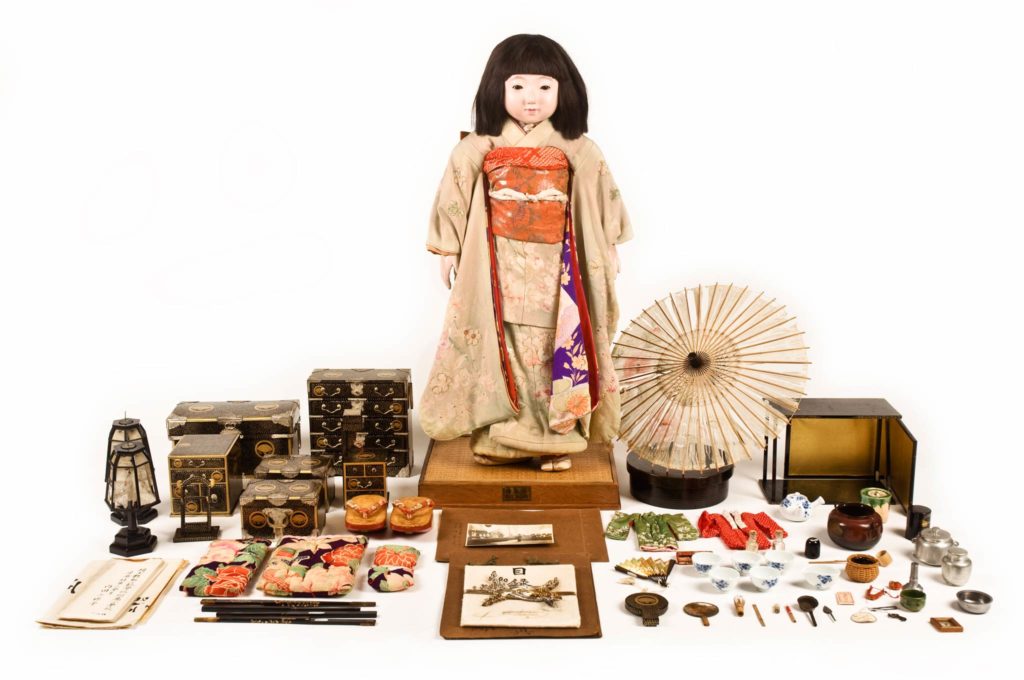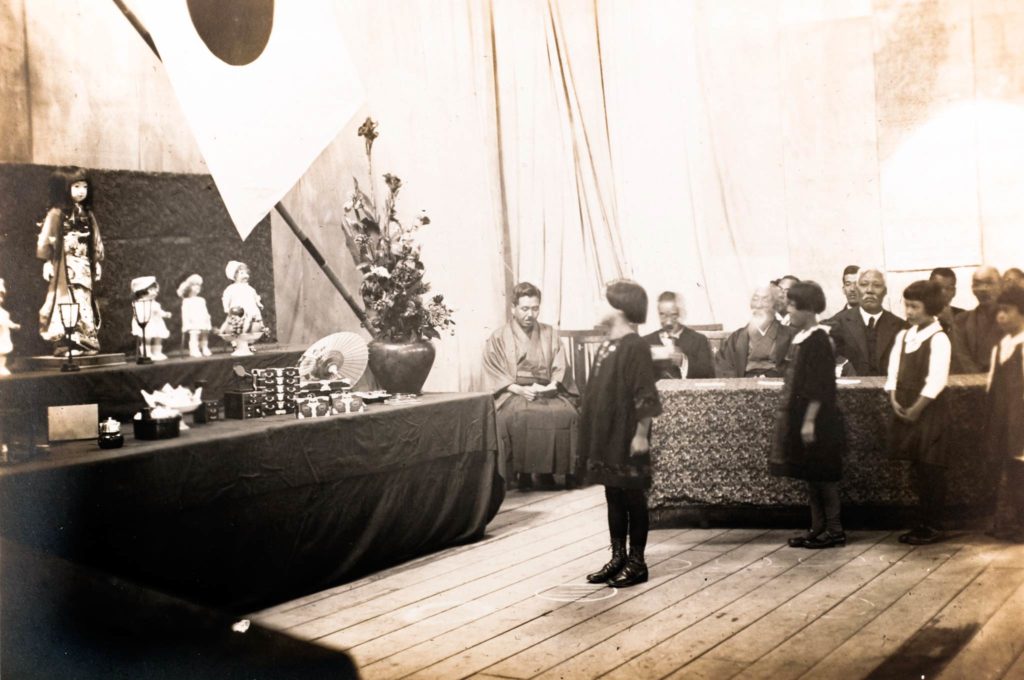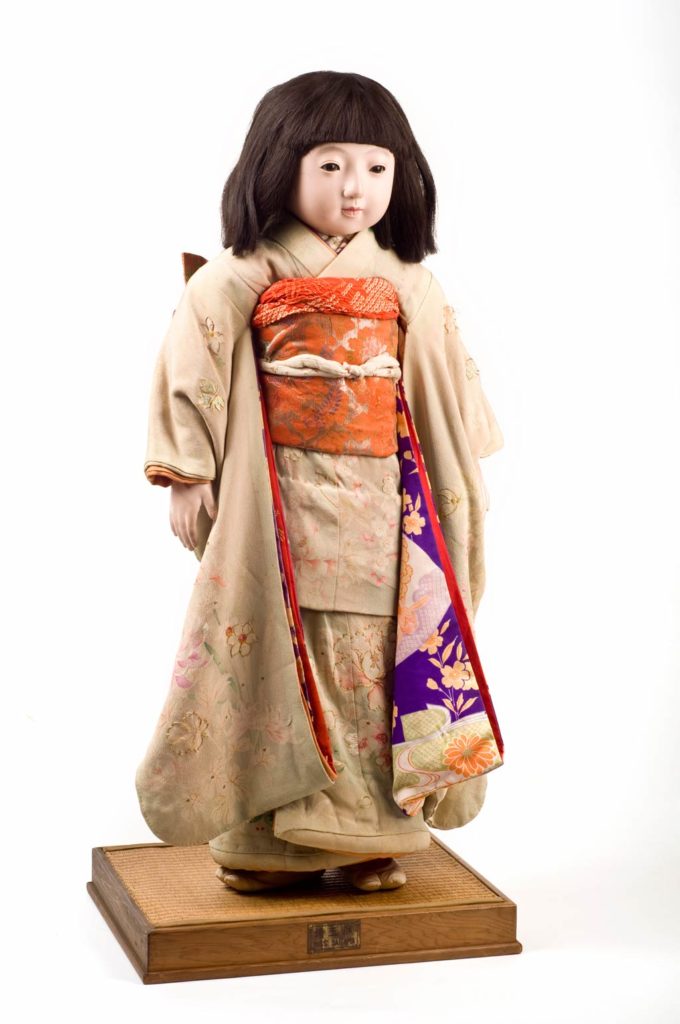Storeroom Stories: Miss Saitama, 1927
One of fifty-eight unique dolls created by Japanese master artisans and exhibited here in her travel trunk, Miss Saitama was part of a US-Japan goodwill public relations campaign launched in opposition to the Oriental Exclusion Act of 1924, which disallowed Asian immigrants from seeking United States citizenship.
Believing this new immigration law unusually unfair, Sidney Gulick, an American cleric and former missionary to Japan formed the “Committee on World Friendship Among Children,” and, with the help of many volunteers, shipped 12,739 “American Blue-Eyed Dolls” to schoolchildren all over Japan. In a remarkable response, Japanese officials ordered a series of hand-crafted, hand-painted dolls, each over thirty-three inches tall and accompanied with large assortment of accessories including furniture, be sent to the United States.
Named “Tamako” by the children of Saitama, but known domestically as “Miss Saitama,” this particular Torei Ningyo (or “doll of gratitude”) arrived at The Charleston Museum in early 1929. Moreover, each piece of her original accoutrement (pictured) remain preserved within the museum’s permanent collections.




